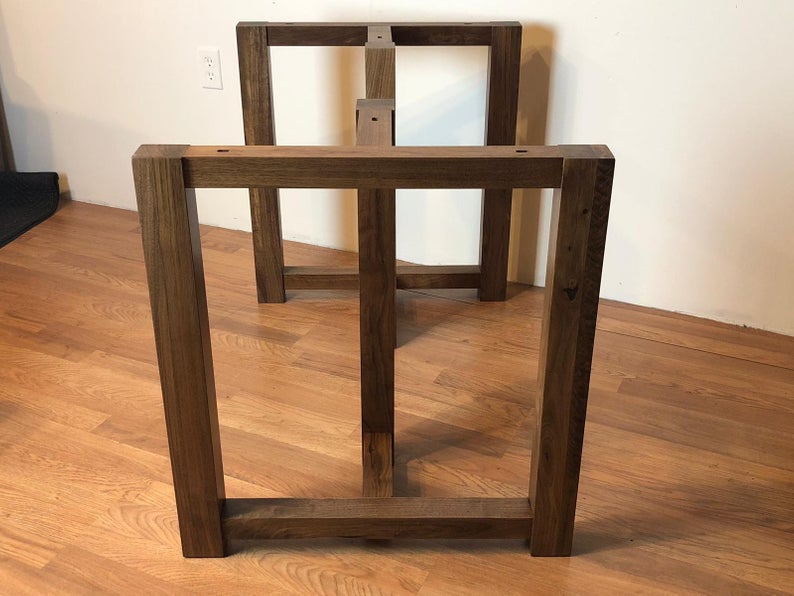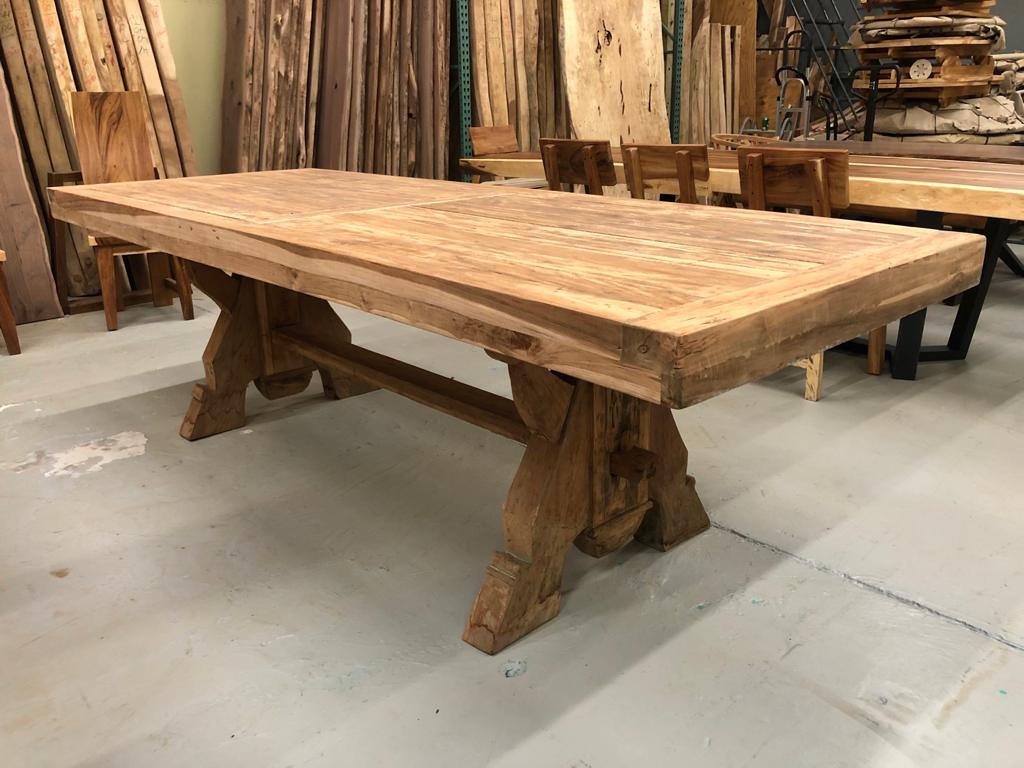Durable and Elegant Selections for Resilient Dining Table Legs Wood Solutions
Secret Factors to Remember for Table Legs Timber Choices
When choosing wood for dining table legs, numerous vital variables call for mindful factor to consider to guarantee both capability and visual charm. The selection of wood kind, characterized by its longevity and special grain patterns, plays a pivotal function in the overall layout and long life of the item. In addition, one must consider maintenance needs and the environmental ramifications of sourcing materials. As these components link, they significantly affect the final result of your eating table. However, comprehending the subtleties of each element can be complicated, bring about crucial choices that merit additional exploration.
Timber Types and Attributes
When choosing wood for dining table legs, it is important to comprehend the one-of-a-kind characteristics of numerous timber types. Various timbers use unique benefits and disadvantages, affecting both the durability and aesthetic charm of the completed product.
Oak, recognized for its outstanding resilience, additionally includes a popular grain that can include character to the table. Cherry wood, with its abundant color that strengthens over time, provides a luxurious appearance however might require even more maintenance to stop scrapes.
On the various other hand, softwoods like yearn and fir are more budget-friendly and simpler to collaborate with, yet they are much less sturdy than hardwoods. Pine is light-weight and includes a warm, rustic look, making it a preferred option for casual dining setups. Nevertheless, it is much more prone to damages and scratches.
Understanding these qualities will help in making an educated decision to ensure the legs of the table meet both useful and aesthetic requirements.
Grain Patterns and Looks
The wood's grain is not just an aesthetic characteristic; it imparts a distinct personality and charm to each item. Different wood varieties display distinct grain patterns, ranging from the straight lines of maple to the elaborate swirls of oak and the striking figure of walnut.
Additionally, the orientation and range of the grain can affect the viewed dimension and style of the table. Larger, extra obvious grains may lend a strong, significant effect, while finer, subtler grains can produce an improved, downplayed look. Additionally, the ending up process can better enhance these patterns, emphasizing the all-natural elegance of the wood and highlighting rich shades.
Ultimately, the selection of grain pattern should harmonize with other style elements, such as the table top and surrounding furnishings, making sure a natural aesthetic that boosts the eating experience. Thoughtful option of timber grain not just adds to the table's elegance yet also shows the proprietor's preference and style.
Toughness and Strength
The toughness and stamina of table legs are vital factors to consider for ensuring longevity and security in any kind of dining space. Picking the ideal wood is essential, as various types exhibit differing degrees of resilience. Hardwoods such as maple, oak, and cherry are often preferred for their inherent toughness and resistance to use. These materials not just hold up against daily usage however also sustain heavy tons, making them read this post here optimal for eating tables that often accommodate several restaurants. Dining Table Legs Wood.

Eventually, purchasing top notch timber and durable building and construction methods will yield a table that stands the test of time, while supplying a reliable foundation for countless dishes shared amongst family members and close friends. Focusing on durability and stamina makes sure that your eating table stays useful and aesthetically pleasing for years ahead.
Maintenance and Treatment
Appropriate maintenance and treatment are essential for preserving the durability and toughness of table legs made from wood. Home Page Routine cleaning is essential; making use of a soft, moist cloth ensures that dirt and debris do not gather, which can result in scratches and monotony. It is a good idea to avoid rough chemicals or unpleasant materials that could damage the surface.
Additionally, using a suitable wood Recommended Reading gloss or wax occasionally can aid preserve the sheen and shield the wood from moisture and spills. However, it is essential to comply with the supplier's suggestions regarding the kind of product to utilize, as particular finishes may respond adversely to details chemicals.
Humidity and temperature level changes can additionally affect wood table legs, triggering them to warp or split. It's finest to place the table away from straight sunshine and warm sources. Resolving these without delay can stop more damages. if the table legs have any kind of scratches or damages.
Finally, periodically evaluating the joints and screws for tightness is very important to preserve structural stability (Dining Table Legs Wood). By adhering to these upkeep methods, homeowners can guarantee their wood table legs remain enticing and useful for many years to find
Environmental Considerations
When picking wood for eating table legs, it's vital to take ecological considerations into account. The sourcing and sustainability of timber are vital in reducing ecological impact. Opting for wood from certified resources, such as those backed by the Forest Stewardship Council (FSC), ensures that the lumber is gathered sensibly, promoting forest preservation and biodiversity.

In addition, regional sourcing of wood reduces transportation discharges, sustaining regional economic climates while reducing ecological influence. It is additionally a good idea to be familiar with the wood's treatment and completing processes, as specific chemicals can be harmful to both human health and the setting. By prioritizing sustainable wood selections, consumers can add to environmental conservation while delighting in the toughness and elegance of their dining table legs.
Verdict
To conclude, choosing wood for dining table legs demands careful consideration of various factors, consisting of timber types, grain patterns, and durability. The aesthetic appeal of unique grain patterns can boost the general style, while the strength of hardwoods makes sure long life. Maintenance needs and ecological sustainability more impact timber selections, stressing the value of sourcing from certified or redeemed products. A notified selection process inevitably adds to a practical and aesthetically enticing dining area that lines up with lasting techniques.
When picking wood for dining table legs, a number of critical variables require cautious factor to consider to ensure both performance and visual appeal.Correct maintenance and care are crucial for maintaining the resilience and toughness of dining table legs made from wood.When choosing wood for dining table legs, it's crucial to take environmental considerations into account. By focusing on lasting timber choices, consumers can add to environmental preservation while appreciating the durability and charm of their dining table legs.
In final thought, picking timber for eating table legs demands mindful factor to consider of numerous aspects, consisting of timber types, grain patterns, and toughness. Dining Table Legs Wood.